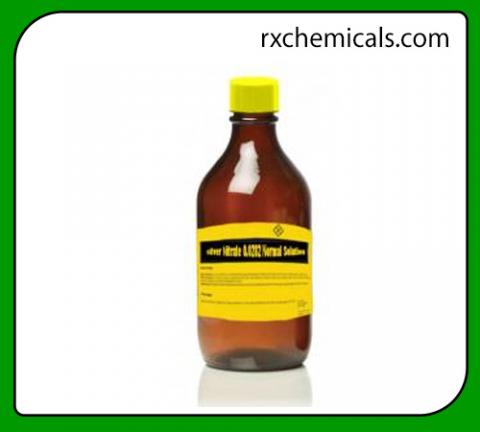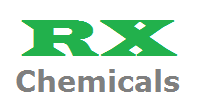
Acetic Acid Glacial
Acetic Acid is synthetic carboxylic acid with antibacterial and antifungal properties. Acetic Acid is used in a wide variety of applications in plastics and derivatives, Leather Industries, used for pH control and to prevent metal-oxide precipitation in industrial drilling fluids, in the production of various polyester fibers, Also in Laudary chemicals etc...
Chemically Acetic Acid is used as Iron Control; pH Adjusting Agent; adjusts the pH of fluid to maintain the effectiveness of other components.
Properties of Acetic Acid
Even though ethanoic acid is considered to be a weak acid, in its concentrated form, it possesses strong corrosive powers and can even attack the human skin if exposed to it. Some general properties of acetic acid are listed below.
Ethanoic acid appears to be a colourless liquid and has a pungent smell.
At STP, the melting and boiling points of ethanoic acid are 289K and 391K respectively.
The molar mass of acetic acid is 60.052 g/mol and its density in the liquid form is 1.049 g.cm-3.
The acid dissociation constant (pKa) of ethanoic acid in a solution of water is 4.76.
The conjugate base of acetic acid is acetate, given by CH3COO–.
The pH of an ethanoic acid solution of 1.0M concentration is 2.4, which implies that it does not dissociate completely.
In its liquid form, acetic acid is a polar, protic solvent, with a dielectric constant of 6.2.
Uses of Acetic acid
VINEGAR
It's obvious this list was always going to start with Vinegar as it is most closely associated with this product. Vinegar consists of typically 5-20% acetic acid with the level of dilution being indicative of the strength (known as grain strength).Acetic acid is present in all types of vinegar from weaker table vinegar through to pickling varieties and more concentrated products.Usually the acetic acid is produced by the fermentation of ethanol or sugars by acetic acid bacteria.
AS A MONOMER OF VINYL ACETATE
The primary use of acetic acid is the production of vinyl acetate monomer (VAM). In 2008, this application was estimated to consume a third of the world's production of acetic acid. The reaction consists of ethylene and acetic acid with oxygen over a palladium catalyst, conducted in the gas phase.
Vinyl acetate is an industrial chemical that is produced in large amounts. It is a clear, colorless liquid with a sweet, fruity smell. It is very flammable and may be ignited by heat, sparks, or flames. Vinyl acetate is used to make other industrial chemicals. These chemicals are used mainly to make glues for the packaging and building industries. They are also used to make paints, textiles, and paper. Vinyl acetate is also used as a coating in plastic films for food packaging and as a modifier of food starch.
AS A SOLVENT IN NON AQUEOUS TITRATION
The organic acids and bases are insoluble in water. These are extremely weak and cannot be analysed using normal titrimetric methods. Hence the non-aqueous titrimetric method is used. The main principle involved in the non-aqueous titrimetric method is the samples are dissolved in the non-aqueous solvents.
This type of competition provided by water towards weak bases or weak acids makes it difficult to detect the end point of the titration. Therefore, these substances which have very sharp end points when titrated in aqueous solutions due to their weakly basic or weakly acidic nature generally need to be titrated in non aqueous solvents
FORMATION OF ACETIC ANHYDRIDE
The product of the condensation of two molecules of acetic acid is acetic anhydride. The worldwide production of acetic anhydride is a major application, and uses approximately 25% to 30% of the global production of acetic acid. The main process involves dehydration of acetic acid to give ketene at 700–750 °C. Ketene is thereafter reacted with acetic acid to obtain the anhydride
As indicated by its organic chemistry, acetic anhydride is mainly used for acetylations leading to commercially significant materials. Its largest application is for the conversion of cellulose to cellulose acetate, which is a component of photographic film and other coated materials, and is used in the manufacture of cigarette filters. Similarly it is used in the production of aspirin (acetylsalicylic acid), which is prepared by the acetylation of salicylic acid.[19] It is also used as a wood preservative via autoclave impregnation to make a longer-lasting timber.
In starch industry, acetic anhydride is a common acetylation compound, used for the production of modified starches
ACETIC ACID FOR WOUND CARE
Pseudomonas aeruginosa is a significant cause of burn wound infections and, skin and soft tissue infections. The antiseptic management is an integral part of the management of wound infections and is essential to control wound infection. Although commonly used, concerns have been raised.Available experimental data suggest that many commonly used antiseptic agents may be toxic to the cells involved in wound healing process and may affect the process of normal tissue repair. In view of this, the present review summarized the acetic acid is commonly used as a substitute for antiseptics to control pseudomonal wound infections with special reference to acetic acid and their role in the process of wound healing. Acetic acid is to be kept in mind as one of the alternatives when infection is caused by multiple antibiotic resistant strains of P. aeruginosa. At a time when bacterial resistance to antibiotics is a matter of increasing concern, the value of topical agents such as acetic acid should not be forgotten.
ACETIC ACID AS A BUFFER
Buffer solutions resist a change in pH when small amounts of a strong acid or a strong base are added.A solution of acetic acid and sodium acetate is an example of buffer. A mixture of acetic acid and sodium acetate is acidic because the Ka of acetic acid is greater than the Kb of its conjugate base acetate. It is a buffer because it contains both the weak acid and its salt. Hence, it acts to keep the hydronium ion concentration (and the pH) almost constant by the addition of either a small amount of a strong acid or a strong base.
ACETIC ACID AS A HERBICIDE
Vinegar has been touted as an effective weed killer. It is a promising broad-spectrum herbicide. Acetic acid is used in a variety of turfgrass and landscape renovation projects, such as the removal of an existing lawn area to install new sod or seed, the removal of a lawn for other landscaping projects, or general weed management in paved and graveled areas. Acetic acid has the ability to break the bonds of the harmful proteins present in the weeds due to which there is a molecular change in the configration of the weed and it is rendered harmless.
ACETIC ACID AS A DESCALER
Acetic acid has the ability to remove limescale from metal surfaces in contact with hot water such as in boiler, water heater and kettles. The fact that acetic acid has a low pH it reacts with alkaline carbobnate compounds present in scale, producing carbon dioxide and soluble salt. Acetic acid is a wear organic acid thereby it is not corrosive and causes no harm to the metal surface. It is also noted that combination of acetic acid is and excellent buffer due to which it inhibits rusting and other degrading processess.
Acetic Acid supplier in Mumbai, Kandla, Kolkata Durgapur West Bengal, Varanashi, Patna, Paradip, Howrah, West Bengal, Navi mumbai MIDC, Visakhapatnam, Chennai, Ennore, Dubai, Fujairah, Sharjah, Ajman, Abudhabi, Ruwi Barka, Muscat, Barka, Oman
Acetic acid is an organic compound with the formula CH3COOH. It is a carboxylic acid consisting of a methyl group that is attached to a carboxyl functional group. The systematic IUPAC name of acetic acid is ethanoic acid. It is also present in vinegar in diluted form. The pungent smell and the sour taste is characteristic of the acetic acid present in it.
An undiluted solution of acetic acid is commonly referred to as glacial acetic acid.It has a wide range of applications as a polar, protic solvent. In the field of analytical chemistry, glacial acetic acid is widely used in order to estimate substances that are weakly alkaline.




